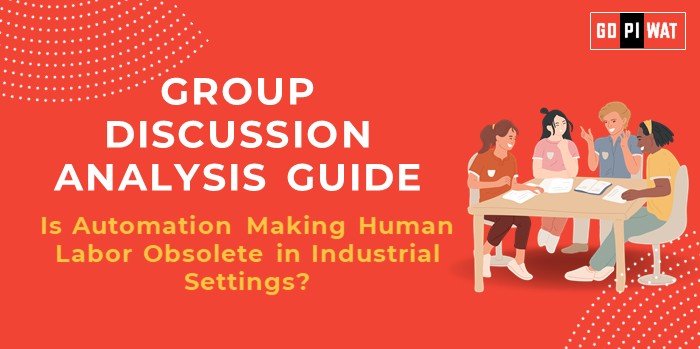📋 Group Discussion Analysis Guide: Is Automation Making Human Labor Obsolete in Industrial Settings?
🌐 Introduction to the Topic
- Opening Context: Automation is transforming industries worldwide, with robotics and artificial intelligence (AI) driving efficiency, innovation, and cost reduction. However, its impact on human labor has ignited debates about its future role in the workforce.
- Topic Background: The Industrial Revolution introduced mechanization, but today’s advancements in AI and robotics are creating machines capable of performing complex cognitive and manual tasks. This progression raises concerns about the sustainability of human labor in industrial roles.
📊 Quick Facts and Key Statistics
- 🤖 Global Industrial Robot Market Size: $37 billion in 2023, projected to reach $81 billion by 2030 (Statista) – indicative of rapid automation adoption.
- 🏭 Jobs Lost to Automation: 25% of jobs in manufacturing globally could be automated by 2030 (McKinsey) – showcasing potential workforce shifts.
- 📈 Countries Leading Automation: South Korea leads with 1,000 robots per 10,000 workers, followed by Singapore and Japan (IFR 2023).
- 💵 Impact on Labor Costs: Automation has reduced manufacturing costs by 20-40% in developed countries (Boston Consulting Group).
👥 Stakeholders and Their Roles
- 🏛️ Governments: Regulation and workforce reskilling initiatives.
- 🏢 Industries: Adoption of AI/robotics to improve efficiency.
- 👷 Workers: Adaptation through upskilling and reskilling.
- 🌍 International Organizations: Setting global standards and promoting inclusive automation policies.
🏆 Achievements and Challenges
✨ Achievements
- Efficiency Gains: Automated production lines are 70% faster than manual operations.
- Product Quality: Enhanced consistency and precision in manufacturing.
- Global Reach: Companies achieve scalability with reduced costs.
⚠️ Challenges
- Workforce Displacement: Millions of low-skilled jobs are at risk.
- Digital Divide: Unequal access to technology limits automation’s benefits.
- Economic Polarization: Skilled workers benefit, but the unskilled may face job losses.
🌍 Global Comparisons
- 🇩🇪 Germany: Leveraged Industry 4.0 to balance automation with worker protection policies.
- 🇨🇳 China: Rapid automation adoption but struggles with social impacts.
📖 Case Study
Tesla Gigafactories: A blend of automation and human oversight, showcasing potential coexistence models.
📚 Structured Arguments for Discussion
- 💪 Supporting Stance: “Automation has driven unprecedented productivity and economic growth, ensuring competitiveness in global markets.”
- ❌ Opposing Stance: “Automation disproportionately impacts low-skilled workers, widening economic inequality and reducing job opportunities.”
- ⚖️ Balanced Perspective: “Automation can complement human labor through upskilling, creating a future-ready workforce while boosting industrial efficiency.”
💡 Effective Discussion Approaches
- 📊 Opening Approaches:
- Data-driven: “Over 25% of manufacturing jobs may vanish by 2030 due to automation; how should industries respond?”
- Historical Context: “Like past revolutions, automation may create new roles we cannot yet imagine.”
- 🎯 Counter-Argument Handling:
- “While automation displaces jobs, retraining programs can mitigate unemployment.”
- “Automation is expensive initially but yields long-term cost benefits.”
🔍 Strategic Analysis of Strengths and Weaknesses
- ✅ Strengths: Enhanced productivity, precision, and scalability.
- ❌ Weaknesses: High initial costs and workforce displacement.
- 🚀 Opportunities: Reskilling, human-machine collaboration, and global competitiveness.
- ⚠️ Threats: Job loss, ethical concerns, and widening skill gaps.
🎓 Connecting with B-School Applications
- 📌 Real-World Applications: Automation in operations management, logistics, and manufacturing strategy.
- ❓ Sample Interview Questions:
- “How can industries balance automation with job creation?”
- “What role should governments play in mitigating automation’s impact?”
- 📘 Insights for Students: Focus on understanding automation’s economic implications and its integration into business strategies.


